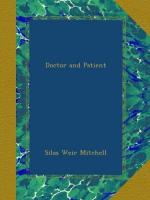I think that Harvey but once or twice mentions the number of the pulse even in his physiological books. In the case descriptions of his time and of Sydenham’s it is rare to find it noted, and this is true as a rule all through the next century. The exceptions are interesting. In Whytte’s works, circa 1745, he not rarely mentions the pulse number in connection with his primary delineation of a case, but after that does not often speak of its subsequent changes in number. The force and other characters of the pulse receive, however, immense attention, and are on the whole more valuable aids than mere numeration; but that cannot nowadays be left out of our calculations, yet as early as the reign of Anne, about 1710, an English physician, Sir John Floyer, wrote an able and now half-forgotten book, quaintly called the “Pulse Watch.” I am pretty sure that he was the first to put a minute-hand on a watch to enable him to time the pulse-beat, but nowhere in any English collection have I been able to find one of his watches. Thus aided, he was the first to count the minute’s pulse, which is now a sort of recognized and accepted matter as standard of comparison, so that we say merely, the pulse was 60 or 90, as may chance, and do not even speak of the minute. It is as true as strange that this convenient method was practically lost to habitual use in medicine for quite a hundred years. It reappeared in the writings of the time of the great teachers who arose in France and Germany about 1825. To-day, in case of need, we have instruments which write in instructive curves the form of the pulse-wave, and enable us to settle questions which sometimes could not be settled without this delicate means.
The study of the temperature of the body was, as I have said, a mere matter of the touch until our same Galileo applied a thermometer to learn more accurately its changes. Sanctorius again followed in his steps, and has left us in his works curious drawings of forms of thermometer applicable to medical uses. Our profession is, however, inapt to hold on to useless things, and our knowledge of fever, its risks and its remedies, was for many a day far behind any need for the delicate appreciations of the thermometer.




